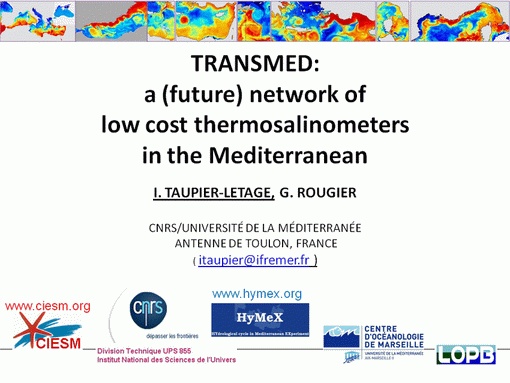TRANSMED in 3 slides
TRANSMED in 23 slides (presentation Panel on Maritime Industry and Marine Sciences, CIESM Meeting, Venice, May 2010) (action of the HYMEX programme (www.hymex.org), task TS6b )
Pictures of the Marfret Niolon (to come)
May 2010: the first dataGallery
oldies/Pilot phase (2005-2006)
The rationale of the programme TRANSMED
A
CIESM
initiative :
TRANSMED aims, in fine, at developing
a network for monitoring the surface temperature and salinity of the Mediterranean autonomously, using ships of
opportunity.
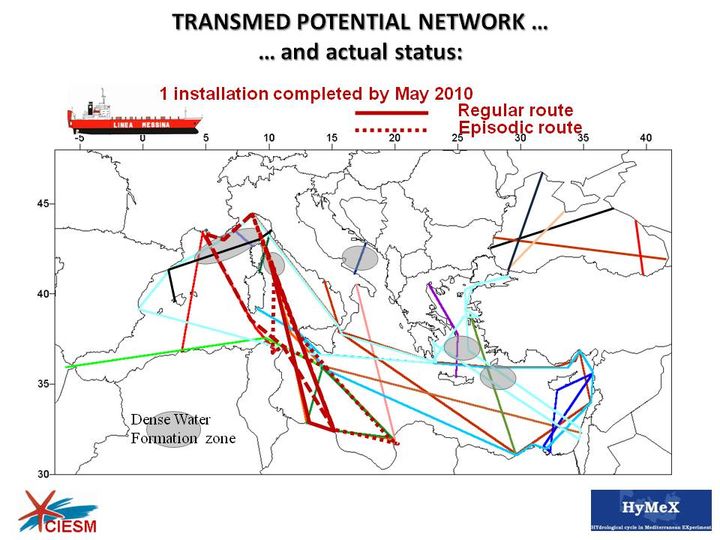
This figure represents such an optimal network, based on existing/actual
shipping routes.
It includes routes crossing the whole basins, sampling the dense water formation
areas (shaded areas), and investigating poorly-known areas (southern parts).
Ferries are especially adequate, since they allow building time series with
a relatively high temporal scale. Thus it is generally possible to correctly
describe the mesoscale, which is present everywhere in the Mediterranean.
Usually sub-sampled data are sent in real time (via Inmarsat), and contribute
to operational oceanography.
The basic equipment is a thermosalinometer,
which records the hydrological (temperature and salinity) parameters. Other
instruments such as fluorometers (for phytoplankton chlorophyll determination)
and biogeochemical sensors (for dissolved oxygen, pCO2, nutrients…) can also
be added, possibly completed by a meteorological station.
Back to top of page
The TRANSMED system
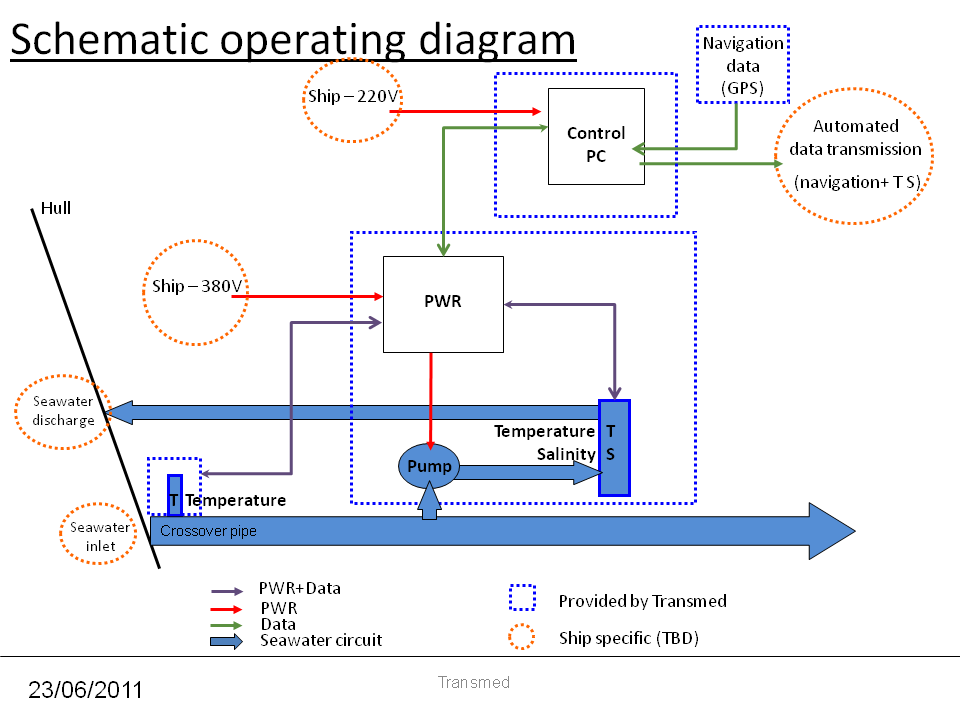 Back to top of page
Back to top of pageThe TRANSMED prototype
Prototype installed aboard the "Jolly Indaco" in May 2010 (see pictures)Lab's prototype in dec.2009
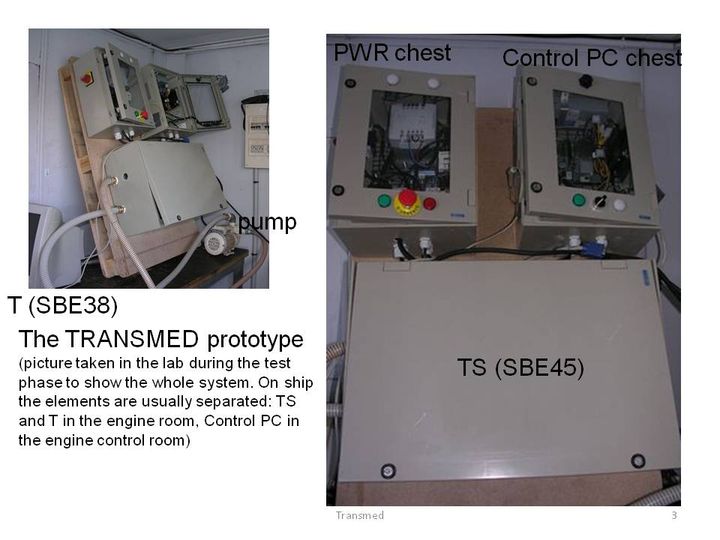 Back to top of page
Back to top of page
May 2010: the first data
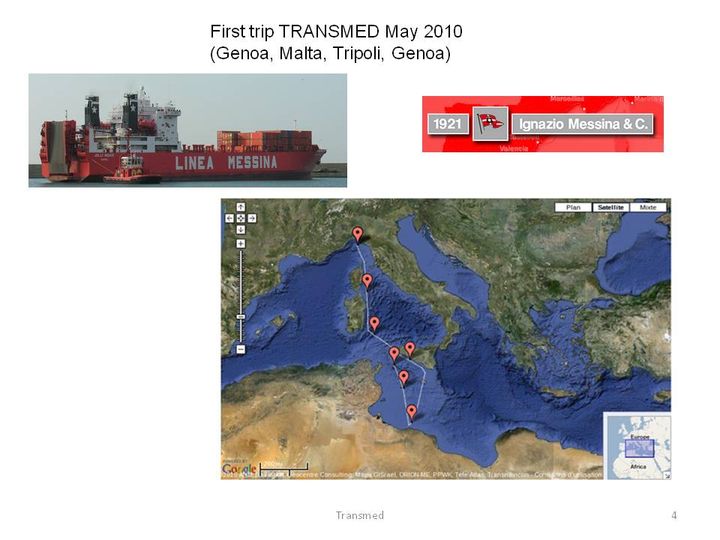
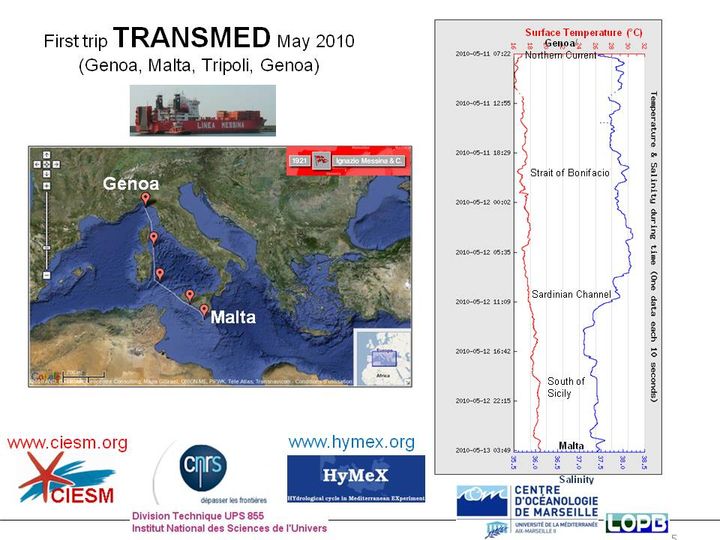
Back to top of pageThe pilot phase in the western Mediterranean
with the ferry "Mediterranee"
- the phases of the project
- the very first data (March 2005)
- illustration of a Mistral event
Jul. 2005: The joint Cetacean observational program (PhD
thesis fellowship granted)
Aug. 2006: the first observations of Cetaceans of this program
Back to top of page
Pilot phase: Installation
of a SeaKeepers Module
(hydrological and meteorological sensors)
on the SNCM car-ferry
"Méditerranée"
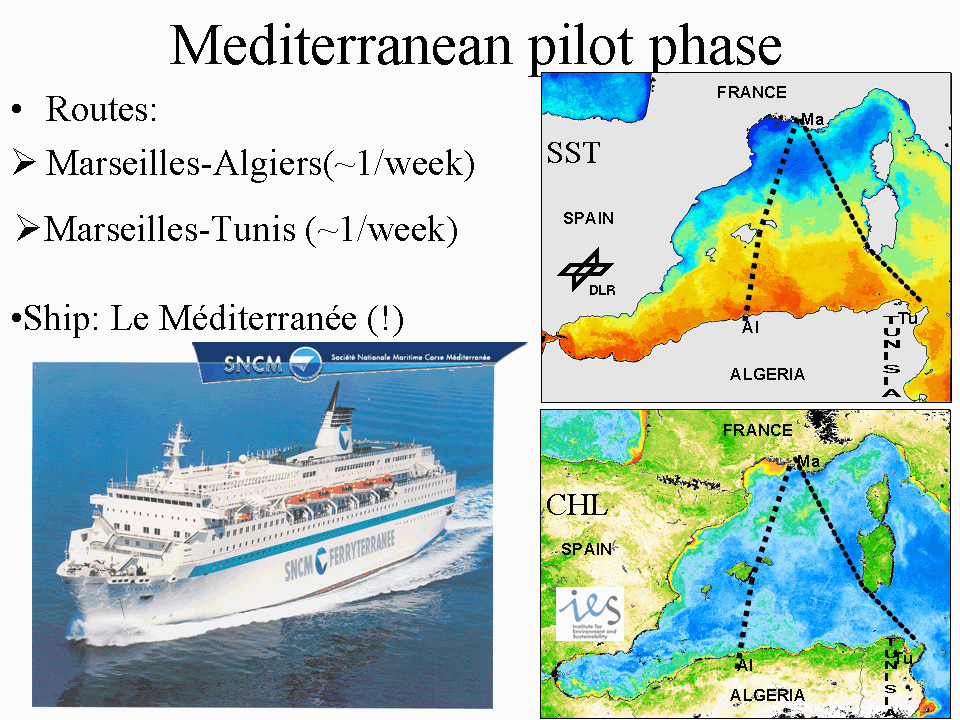
Image of the Sea Surface Temperatures (SST, composite for january 1998 from
DLR). Temperatures increase from blue to red.
Image of the chlorophyll distribution (composite for january 1998
from IES/JRC). Concentrations increase from blue to red.
MORE...
Project phases:
Installation and maintenance are performed by SeaKeepers and its french representative MARITECH
(Grimaud, France)
From jan. 2003 to jan. 2005: installation phase
17 jan. 2005: data acquisition test phase
04 feb. 2005: data acquisition stopped (system
not operationnal)
From 3 to 7 mar. 2005: modification and update
of the system to implement a function
preventing pumping into harbours and triggering a chlorination cycle (antifouling).
02 jun.
2005 : installation of a
fluorometer to retrieve information on the
chlorophyll/phytoplankton content (LOB/CNRS - Région Provence-Alpes-Côte d'Azur).
09 jun. 2005: calibration of the meteorological
sensors compass
18 jun.: the system is ready for the pilot phase (seawater temperature
and salinity, meteorological parameters)
18 jun. -8 jul. 2005: good data acquisition period (of which a strong mistral
wind event); the fluorometer appears not to be stable in the unattended mode
(too much fouling).
8 jul: data acquisition stops (failure of the ship's PWR supply to INMARSAT).
31 jul. : system restarted.
19 sep.: heavy fouling, system stopped (failure of a connexion)
20 sep. - 13 oct.: ship stopped.
17 oct.: system restarted, chlorination cycle restored.
07 nov.: system stopped to allow shipyard operations (07 nov. - 16 dec.)
16 dec.: system restarted.
2006:
04 jan.: system stopped (ship stopped for technical operations)
expected restart (with CTD changed ?) by mid february, for ~10 days
then ship stopped for technical operations
back to normal operation: expected by early march
march-mid-june: CTD Idronaut module changed, calibrated. Technical problems on system
mid-june: system back on duty, data format modified.
mid-june -sep. : data acquisition running (but hull temperature sensor not valid, meteorological wind sensors not valid)
Example of data/ aug. 2006 (see also the corresponding observations of Cetaceans):
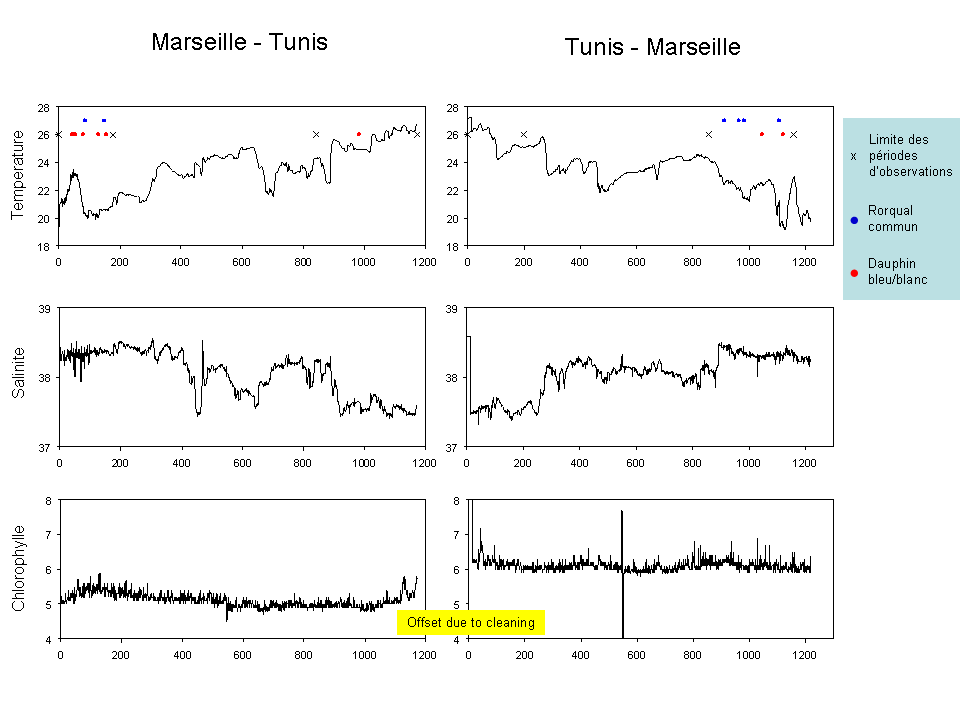
The first data / march 2005!
(real time transmission, 1 averaged measurement transmitted/hour; temperature
on the left, salinity on the right)
ship stopped for modifications
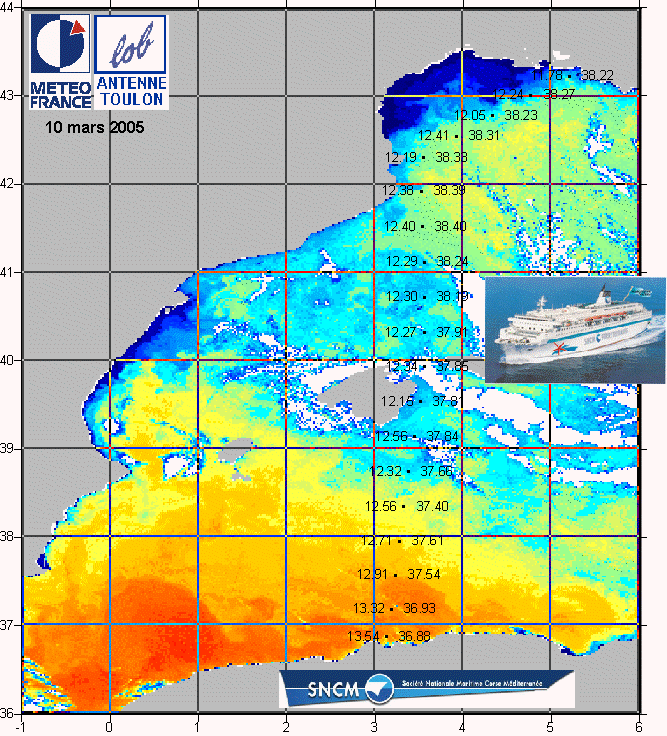
Observations during the mistral
wind event on the Gulf of Lions from June 28. to July 8. 2005:
preliminary results on the rapid decrease
of the temperature (from ~25°C to ~15°C! ) due to the wind-induced
upwellings
Joint project:
Time series of observations of Cetaceans
, benefiting from the hydrological and dynamical coincident observations.
This is a PhD fellowship granted by the Région
Provence-Alpes-Côte d'Azur, to start in fall 2005.
- outline of the project:
- Illustrated general presentation of the project
- administrative information and collaborations (in french)
- detailed scientific project (in
french)
- New! the first Cetacean observations
- Back to top of page
